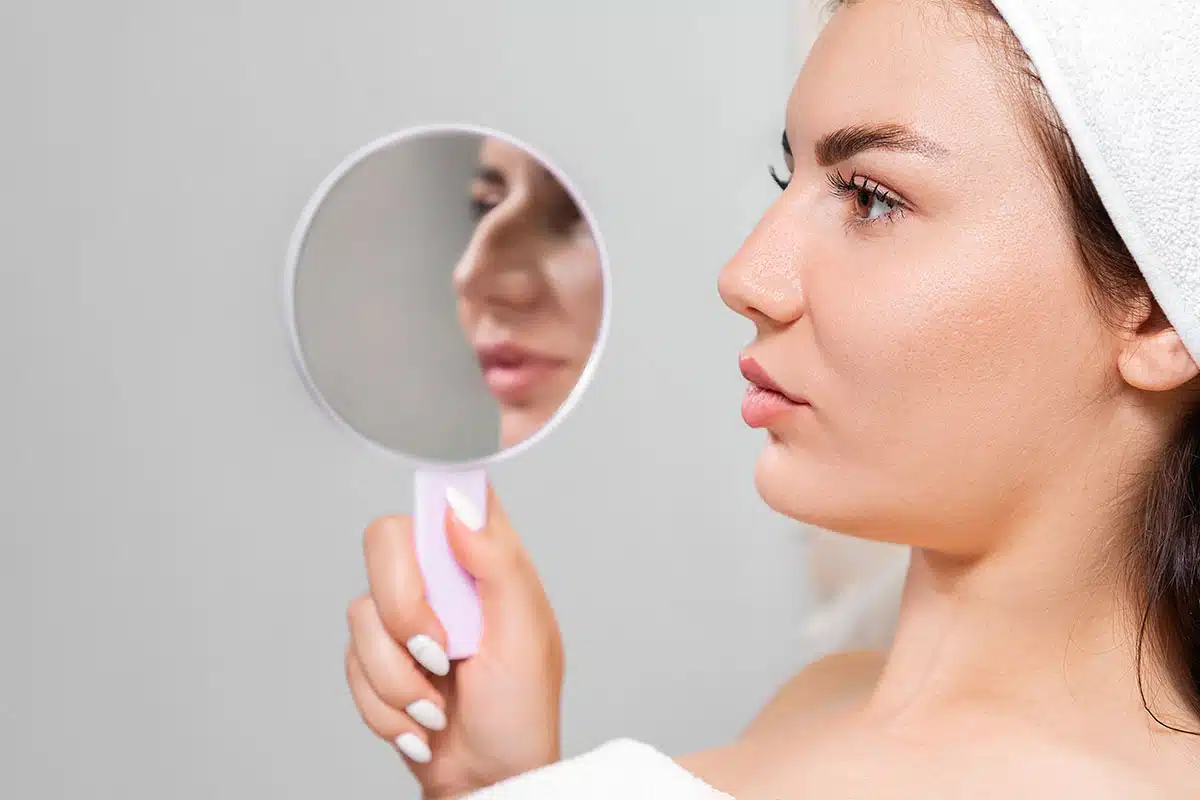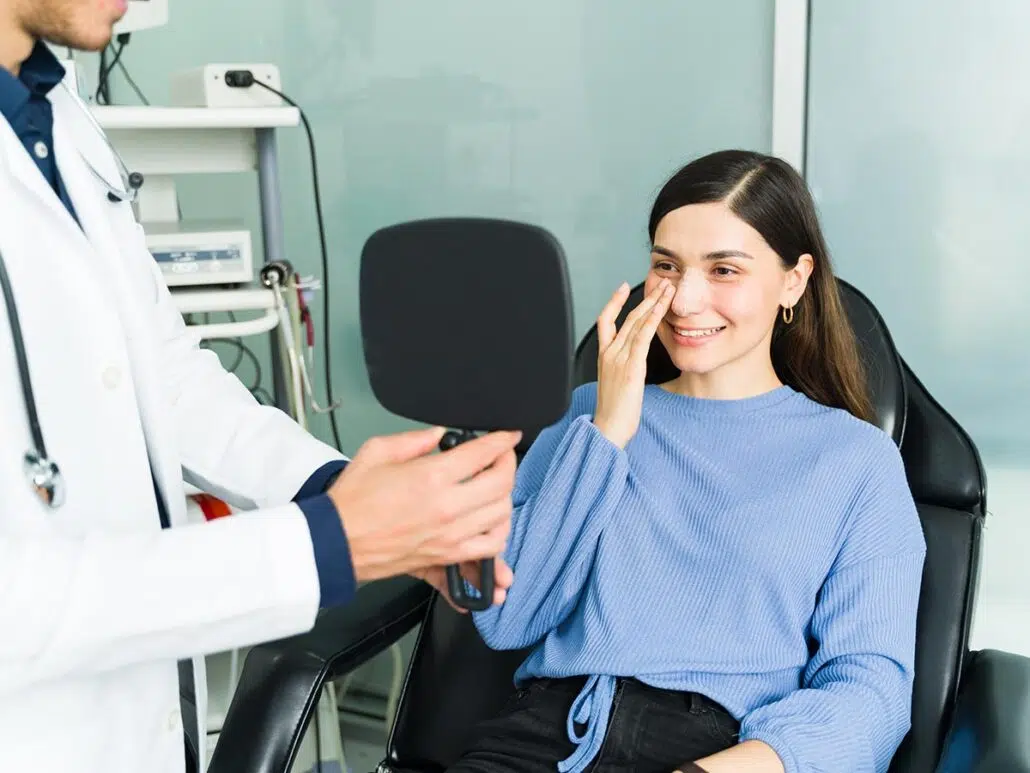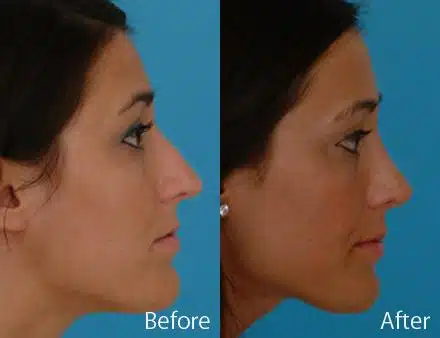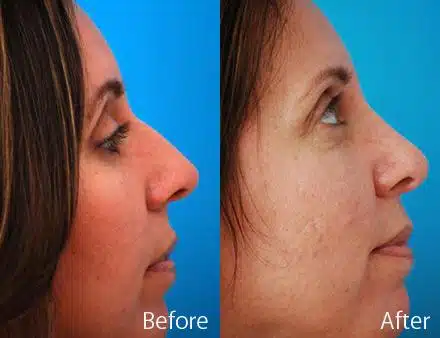Understanding Rhinoplasty Complications: Risks, Factors, and How To Avoid Them

Have you been considering rhinoplasty to improve the appearance or function of your nose? It’s one of the most popular cosmetic surgeries in the world, known for its ability to deliver dramatic yet natural results. But like any surgical procedure, it’s important to fully understand what’s involved, including the potential risks.
Rhinoplasty is a delicate and highly personalized procedure. When performed by a skilled specialist, the likelihood of complications is very low. Still, being informed about what can go wrong helps you make empowered, confident decisions about your treatment. Let’s explore what you need to know.
Is Rhinoplasty Safe?
Rhinoplasty is generally considered a safe procedure with a high satisfaction rate. As with any surgery, there are inherent risks involved, but major complications are rare. With proper surgical technique, a sterile environment, and good post-operative care, most patients recover smoothly. Choosing a highly experienced surgeon can greatly reduce risks, but it’s still essential to be aware of the potential for swelling, breathing issues, or, in rare cases, more serious complications if healing doesn’t go as expected.
What Are the Most Common Risks of Rhinoplasty?
While rhinoplasty complications are uncommon, there are a few side effects and risks that occur more frequently than others. These are typically mild, manageable, and often part of the normal healing process. However, understanding what to expect helps patients identify what’s normal and when it’s time to follow up with their surgeon. Below are some of the most commonly reported issues following rhinoplasty surgery:
Swelling and Bruising
Swelling and bruising are the most common and immediate side effects after rhinoplasty. These symptoms typically peak within the first few days following surgery and gradually subside over the next two weeks. While some residual swelling—especially around the nasal tip—may linger for several months, most of it resolves much sooner. Cold compresses, rest, and keeping the head elevated can significantly reduce these effects. Temporary bruising under the eyes is also common and should fade as healing progresses.
Infection
Although rare, infections can occur after rhinoplasty if bacteria enter the surgical site. Symptoms might include increased redness, warmth, swelling, pain, or discharge around the nose. Prompt treatment with antibiotics is usually effective, and serious infections are highly uncommon in patients who follow proper post-operative care instructions. Choosing a board-certified surgeon who maintains sterile surgical protocols greatly minimizes this risk. Patients should also avoid touching or bumping their nose during the early healing phase to reduce exposure to bacteria.
Bleeding
Minor bleeding is not unusual during the first few days following rhinoplasty, especially when blowing your nose or during suture removal. However, excessive or prolonged bleeding is rare and may indicate an underlying issue that requires medical attention. Patients are typically advised to avoid medications or supplements that thin the blood, such as aspirin or ibuprofen, both before and after surgery. Keeping the head elevated and avoiding strenuous activities also helps reduce the risk of postoperative bleeding.
Difficulty Breathing
Some patients experience temporary difficulty breathing through the nose after rhinoplasty due to internal swelling, nasal packing, or structural changes. This usually improves as the tissues heal and inflammation decreases over time. However, if the nasal airway is narrowed excessively or not properly supported, long-term breathing issues can occur. A thorough preoperative assessment and expert surgical planning are key to preventing such complications. It’s important to report any prolonged or worsening symptoms to your surgeon for timely evaluation.
Numbness
Temporary numbness in the nasal area, especially around the tip and upper lip, is a common post-rhinoplasty symptom caused by disruption to small sensory nerves during surgery. This sensation usually fades within a few weeks to months as the nerves regenerate. In rare cases, numbness may persist longer but typically does not affect daily function. Patients are often reassured once they understand that this is a normal part of healing and not typically a sign of a serious complication.
Scarring
Scarring from rhinoplasty is usually minimal, particularly with the closed technique where incisions are made inside the nostrils. In open rhinoplasty, a small incision is made across the columella, the strip of tissue between the nostrils. While this may leave a faint scar, it typically fades significantly over time and is barely noticeable. Proper wound care and avoiding sun exposure during healing can help optimize scar appearance. Keloids and hypertrophic scars are rare but can occur in sensitive individuals.
Nasal Septal Perforation
A nasal septal perforation is a rare complication where a hole develops in the septum, the cartilage that divides the two nasal passages. This can lead to symptoms such as nasal congestion, crusting, whistling sounds when breathing, and sometimes nosebleeds. It typically results from trauma, infection, or compromised blood supply during surgery. While small perforations may heal on their own or remain asymptomatic, larger ones often require surgical repair. Preventing this issue starts with precise, careful surgical technique.
Unsatisfactory Results
Despite a surgeon’s best efforts, not every rhinoplasty yields the exact outcome a patient envisioned. Unsatisfactory results can involve aesthetic issues, such as asymmetry or a nasal shape that doesn’t match expectations, or functional concerns like breathing difficulties. This can be disappointing, especially after a long recovery. However, most of these concerns are correctable through revision surgery. Choosing a qualified, communicative surgeon from the start reduces the risk of unmet expectations and improves overall satisfaction with the results.
Secure Your Safe Treatment Experience with Dr. Daniel G. Becker.
Join our satisfied clients who’ve experienced safe, effective treatments.
Less Common but Serious Risks and Complications
Though extremely rare, there are certain complications associated with rhinoplasty that can be more serious in nature. These risks are not typical and often occur only in cases involving complex surgery, underlying health issues, or poor surgical technique. Being aware of these possibilities underscores the importance of choosing a highly qualified surgeon and following all pre- and post-operative instructions carefully. Here are some of the most uncommon but serious complications that patients should know about:
Skin Necrosis
Skin necrosis is a rare but serious complication where skin tissue dies due to insufficient blood supply. In rhinoplasty, this can occur if the blood flow is disrupted during surgery or if post-operative care is neglected—especially in smokers or patients with vascular issues. Signs include darkened, painful skin and delayed healing. Prompt medical attention is essential to prevent further damage or infection. Prevention lies in delicate surgical handling, avoiding tight dressings, and strictly following recovery guidelines.
Central Retinal Artery Occlusion
Central retinal artery occlusion (CRAO) is an exceptionally rare complication of rhinoplasty that can lead to sudden and potentially permanent vision loss. It occurs when the artery supplying blood to the retina becomes blocked, usually due to fat or filler emboli. Though more commonly linked to injectable procedures, CRAO has been reported in rare surgical cases. Immediate medical attention is critical, but outcomes are often poor. This underlines the importance of careful surgical technique and precise anatomical knowledge.
Cavernous Sinus Thrombosis
Cavernous sinus thrombosis is a very rare but potentially life-threatening condition in which a blood clot forms in a large vein at the base of the skull. In the context of rhinoplasty, it could theoretically occur if an infection spreads from the nasal area into the venous system. Symptoms may include severe headache, vision changes, fever, and facial swelling. Immediate hospitalization and antibiotic therapy are critical. This rare complication underscores the importance of preventing and managing post-surgical infections.
Anesthesia Risks
As with any surgical procedure, rhinoplasty involves some risk related to anesthesia. Complications may include allergic reactions, respiratory difficulties, or, in rare cases, cardiovascular events. These are extremely uncommon, particularly when anesthesia is administered by a licensed and experienced anesthesiologist. Most patients undergo general anesthesia safely and without incident. A thorough pre-operative health assessment helps identify potential risks in advance. Discussing your full medical history and following fasting guidelines are key to minimizing anesthesia-related complications during rhinoplasty.
Factors Increasing the Cosmetic Surgery Risks
While rhinoplasty is safe for the vast majority of patients, some individuals may face a higher risk of complications due to specific lifestyle habits, medical conditions, or surgical history. Understanding these risk factors helps patients take proactive steps to prepare for surgery and improve their chances of a smooth recovery. Here are some of the key elements that can influence the overall risk profile for cosmetic nasal surgery:
Smoking and Alcohol
Smoking and excessive alcohol use can significantly increase the risk of complications during and after rhinoplasty. Nicotine restricts blood flow, which can impair healing and increase the chance of tissue damage, infection, or scarring. Alcohol, especially when consumed close to surgery, can thin the blood and heighten the risk of bleeding. Patients are strongly advised to stop smoking at least a few weeks before and after surgery and to avoid alcohol during the critical recovery period.
Underlying Medical Conditions
Chronic health conditions such as diabetes, autoimmune disorders, or heart and lung disease can elevate the risks associated with rhinoplasty. These conditions may affect how well the body heals, how it responds to anesthesia, or how the immune system handles recovery. Patients with such medical histories must undergo a thorough pre-surgical evaluation, and their surgeons may collaborate with primary care providers or specialists to ensure safety. Being upfront about all medical issues is essential to planning a successful surgery.
Previous Rhinoplasties
Each additional rhinoplasty procedure increases the complexity and risk of the surgery. Scar tissue from prior operations can obscure nasal structures, limit surgical options, and impair healing. Revision surgeries also often involve cartilage grafting or structural reinforcement to address prior issues, which demands a higher level of skill. Patients who have undergone one or more previous rhinoplasties should consult with a specialist who has extensive experience in revision procedures to ensure the safest and most effective results possible.
Surgeon Experience
The expertise of your surgeon plays a critical role in minimizing the risks and achieving a successful rhinoplasty outcome. An experienced surgeon not only understands nasal anatomy in depth but also knows how to tailor techniques to individual patient needs while avoiding complications. Inadequate training or limited experience increases the likelihood of poor results or surgical errors. Patients should research credentials, review before-and-after photos, and seek out specialists with extensive experience and a strong reputation in rhinoplasty.
Secondary Rhinoplasty Surgery
When a primary rhinoplasty results in unsatisfactory or problematic outcomes—whether cosmetic, functional, or both—secondary, or revision rhinoplasty is often the only viable solution. This corrective procedure is designed to address complications such as asymmetry, breathing issues, or collapsed nasal structures that may not have been successfully resolved in the first surgery. Because of the presence of scar tissue and altered anatomy, revision rhinoplasty is significantly more complex and should only be performed by highly experienced nose specialists.
These surgeries often require more time in the operating room and may involve cartilage grafting from the ear or rib to rebuild the nasal structure. As a result, they tend to have a higher cost than primary rhinoplasty. Patients considering revision surgery must understand the elevated challenges and risks involved. If your first rhinoplasty led to complications, it’s essential to work with a surgeon who specializes in nose jobs to restore both the form and function of the nose with precision.
Are the Rhinoplasty Benefits Worth the Risk?
Absolutely—while every surgical procedure carries some level of risk, the risks associated with rhinoplasty are very low, especially when performed by a qualified specialist. For many patients, the benefits far outweigh the potential drawbacks, making rhinoplasty a life-changing investment in both appearance and wellness. Benefits of rhinoplasty can include:
- Improved facial harmony and nasal aesthetics
- Enhanced self-esteem and confidence
- Correction of functional issues, such as breathing difficulties, through septo-rhinoplasty
- Long-term satisfaction with overall facial balance and profile

Work with a Rhinoplasty Specialist for your Nose Surgery
Choosing a skilled and experienced plastic surgeon is the most important step you can take to minimize the risks of rhinoplasty. A seasoned surgeon understands the intricate structure of the nose, plans meticulously, and uses refined techniques to reduce the likelihood of complications and ensure natural-looking, functional results.
At The Becker Rhinoplasty Center, your care is led by Dr. Daniel Becker, a Clinical Professor at the University of Pennsylvania and one of the most respected names in rhinoplasty. With over 100 scientific publications, four surgical textbooks, and leadership of the PENN Rhinoplasty Course since 1998, Dr. Becker brings unmatched expertise to every procedure. Call us at 856-772-1617 or 856-589-6673, or visit our contact page to schedule your consultation today.

